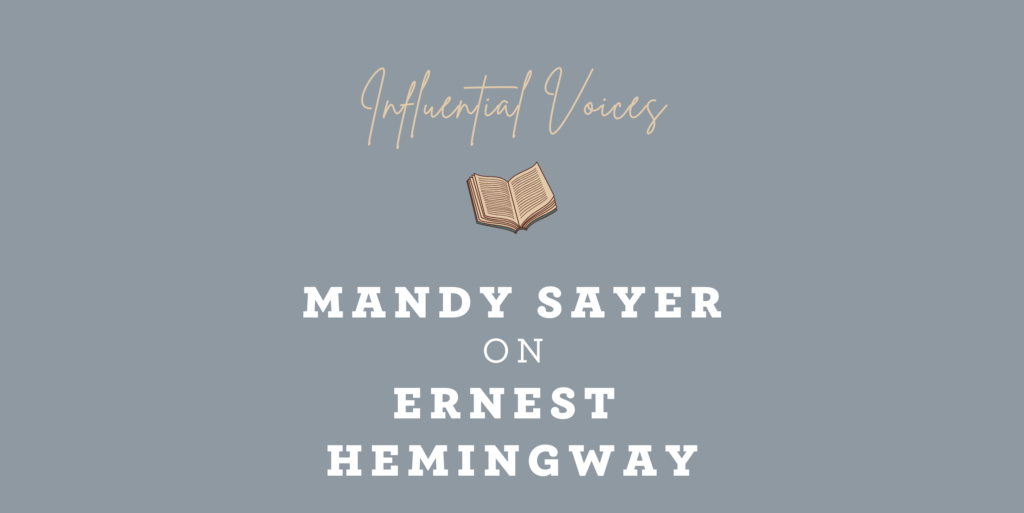
The dignity of movement of an iceberg,’ Ernest Hemingway once remarked, ‘is due to only one-eighth of it being above water.’ This simple statement is a coalescence of the famous writer’s aesthetics. Hemingway was one of the first modern short story writers to pare back subjectivity and exposition to the point at which a reader was compelled to read actively, to fathom the seven-eighths of the narrative that the author deliberately left out.
Like the jazz pianist Count Basie or trumpeter Miles Davis, it was through his silences that Hemingway expressed the most (Davis once famously declared, ‘Don’t play what’s there. Play what’s not there!’)
Similarly, as a short story writer, Hemingway was wedded to the aesthetics of omission: ‘You could omit anything if you knew that you omitted, and the omitted part would strengthen the story and make people feel something more than they understand.’ This form of poetics is often linked with what became known as Hemingway’s ‘objective’ style: the third-person point of view avoids analysis of a character’s thoughts and feelings and instead creates external actions, images, and settings that suggest the inner lives of the characters rather than stating them overtly. As American author Frederick Busch remarked on the ending of Hemingway’s novel, A Farewell to Arms: ‘He doesn’t have to tell me outright that Frederic Henry weeps for his Catherine; the way he excludes the tears makes me taste them.’ In this sense, the most minimal of Hemingway’s short stories are closer to the genres of poetry and playwriting than the traditional conventions of short fiction.
Many scholars have suggested that it was Hemingway’s background in journalism that enhanced his objective prose, but he had other influences, too, mainly in the form of Anton Chekhov, known famously for being the father of the modern short story. Chekhov, also a playwright, was a master at using objective external details, coupled with understatement and irony, to convey complex emotional states. This rendering of the internal through the external, the subjective through the objective, is a technique T.S. Eliot later described as the ‘objective correlative’.
The method involves writing imagery and actions that are so precise, so resonant, that the narrator doesn’t need to state how a certain character feels: the emotions are already there, embedded in the landscape, the light, the weather, the scents, the sounds, and the silences. Take this passage, for example, from the story ‘Hills Like White Elephants’, which in the context of the narrative represents all the hope and fecundity the female character experiences as she contemplates her unexpected pregnancy:
The girl stood up and walked to the end of the station. Across, on the other side, were fields of grain and trees along the banks of the Ebro. Far away, beyond the river, were mountains. The shadow of a cloud moved across the field of grain and she saw the river through the trees.
Many of Hemingway’s settings appear to be influenced by the spatial and temporal limitations of the theatre: one scene, one symbolic setting, narrated in real time: ‘A Clean, Well-lighted Place’ (a café); ‘A Canary for One’ (a single train compartment); or ‘Hills Like White Elephants’ (a railway station). The most elliptical stories read like one-act plays, constructed of dialogue and brief ‘stage directions’.
Again, in ‘Hills Like White Elephants’, for example, an unhappy couple sit on a railway platform ‘between two lines of rails in the sun’. In fact, the station is a junction, a crossroad for trains, and, implicitly, an emotional junction for the quarrelling travellers, whose relationship, we sense, will ‘never be going in the same direction’ once the story has ended. Hemingway inherited this distant, dramatic voice from Chekhov and, to a lesser extent, from the stories of James Joyce. As the American critic Charles May once noted, ‘what at first seems merely a realistic depiction of ordinary physical reality communicates metaphorically, what is, basically, incommunicable.’
It was Hemingway, in particular, who mastered, in prose form, the playwright’s technique of ‘showing’ rather than ‘telling’. Both he and Chekhov wanted readers to bring to the story what an actor would offer when performing a play: engagement, interpretation, a process that invites the reader, like the thespian, to become a collaborator in the making of meaning.
About the Writer
Mandy Sayer is an award-winning novelist, memoirist and short story writer.
More from Writing NSW
Check out our full range of in-person writing courses in Sydney, our online writing courses and our feedback programs to see how we can help you on your writing journey. Find out about our prizes and opportunities, as well as writing groups across NSW, and sign up to our weekly newsletter for writing events, opportunities and giveaways.
